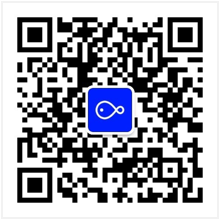全身关键点检测-通用领域-2D
输入一张人物图像,端到端检测全身133点关键点,输出人体框和对应的全身关键点,包含68个人脸关键点、42个手势关键点、17个骨骼关键点和6个脚步关键点。
- 模型资讯

- 模型资料
全身133点关键点检测模型
输入一张人物图像,端到端检测全身133点关键点,输出人体框和对应的全身关键点,包含68个人脸关键点、42个手势关键点、17个骨骼关键点和6个脚部关键点。
133点人体关键点

模型描述
该任务采用自顶向下的全身关键点检测框架(如下图),通过端对端的快速推理可以得到图像中的人体关键点。其中全身关键点模型基于HRNet的backbone,充分利用多分变率的特征融合,良好支持日常人体姿态,具有SOTA的检测精度。

使用方式和范围
使用方式:
- 直接推理,在任意真实人物图像上进行直接推理;
使用范围:
- 包含人体的图片,人体分辨率大于100x100,总体图像分辨率小于1080x720,图像大小不超过2M。
目标场景:
- 动作计数
- 动作匹配打分
- 人体动作识别
- 虚拟驱动
- 手势识别
- 人脸识别
如何使用
在ModelScope框架上,提供输入图片,即可以通过简单的Pipeline调用来完成人体关键点检测任务。
代码范例
# numpy >= 1.20
from modelscope.pipelines import pipeline
from modelscope.utils.constant import Tasks
model_id = 'damo/cv_hrnetw48_human-wholebody-keypoint_image'
wholebody_2d_keypoints = pipeline(Tasks.human_wholebody_keypoint, model=model_id)
output = wholebody_2d_keypoints('https://modelscope.oss-cn-beijing.aliyuncs.com/test/images/keypoints_detect/img_test_wholebody.jpg')
# the output contains keypoints and boxes
print(output)
模型局限性以及可能的偏差
-
输入图像存在人体严重残缺或遮挡的情形下,模型会出现人体或点位误检和漏检的现象。
-
高度运动模糊的情形下,模型会出现人体或点位误检和漏检的现象。
-
模型训练时采用帧间稳定性优化,但在视频数据上,仍然建议采用One-Euro-Filter进行帧间点位平滑后处理。
训练数据介绍
训练数据使用COCO公开数据集(https://cocodataset.org/#download)。
模型推理流程
该模型采用自顶向下的人体关键点检测流程,模型推理分为人体检测和关键点检测两个步骤。
人体检测
推理
- 端到端模型推理,输出备选人体检测框和score。
人体关键点检测
预处理
- 基于人体检测框从图像中裁剪人体,变换得到384x288大小的模型输入数据。
推理
- 端到端模型推理,输出133点人体关键点heatmap。
后处理
- 获取heatmap极大值坐标,辅以第二极大值坐标微调,获得人体关键点坐标值。
- 将人体图像空间中的关键点坐标变换到原图坐标空间中。
数据评估及结果
测评指标
COCO数据集上模型指标:
| Method | 输入大小 | Body AP | Body AR | Foot AP | Foot AR | Face AP | Face AR | Hand AP | Hand AR |
|---|---|---|---|---|---|---|---|---|---|
| hrnetw48 | 384x288 | 0.742 | 0.807 | 0.705 | 0.804 | 0.840 | 0.892 | 0.602 | 0.694 |
模型效果




引用
@InProceedings{Sun_2019_CVPR,
author = {Sun, Ke and Xiao, Bin and Liu, Dong and Wang, Jingdong},
title = {Deep High-Resolution Representation Learning for Human Pose Estimation},
booktitle = {Proceedings of the IEEE/CVF Conference on Computer Vision and Pattern Recognition (CVPR)},
month = {June},
year = {2019}
}




